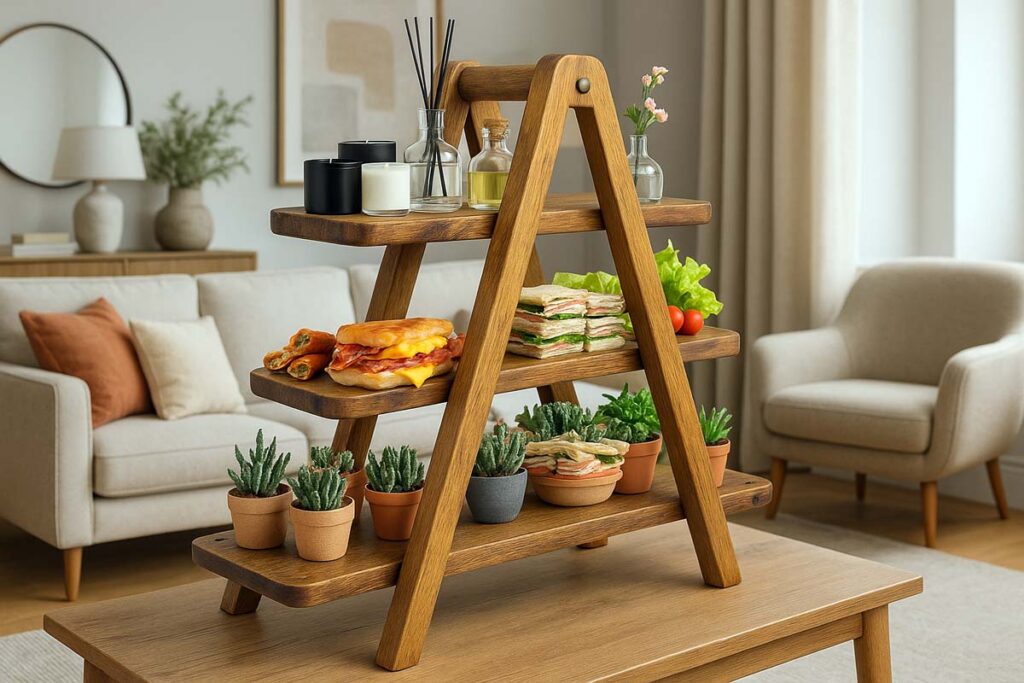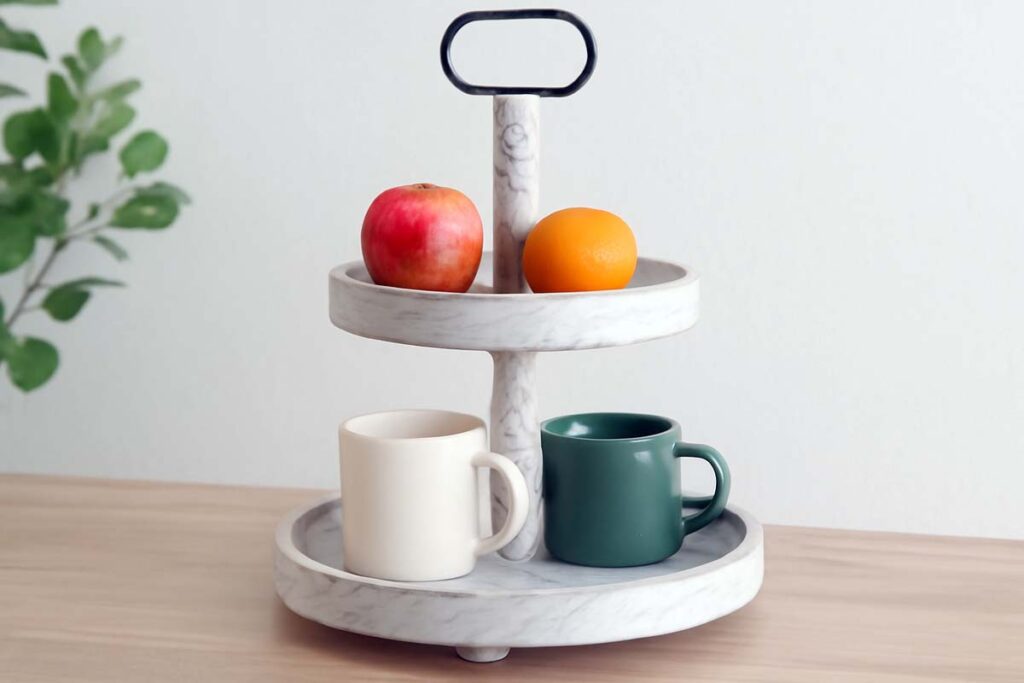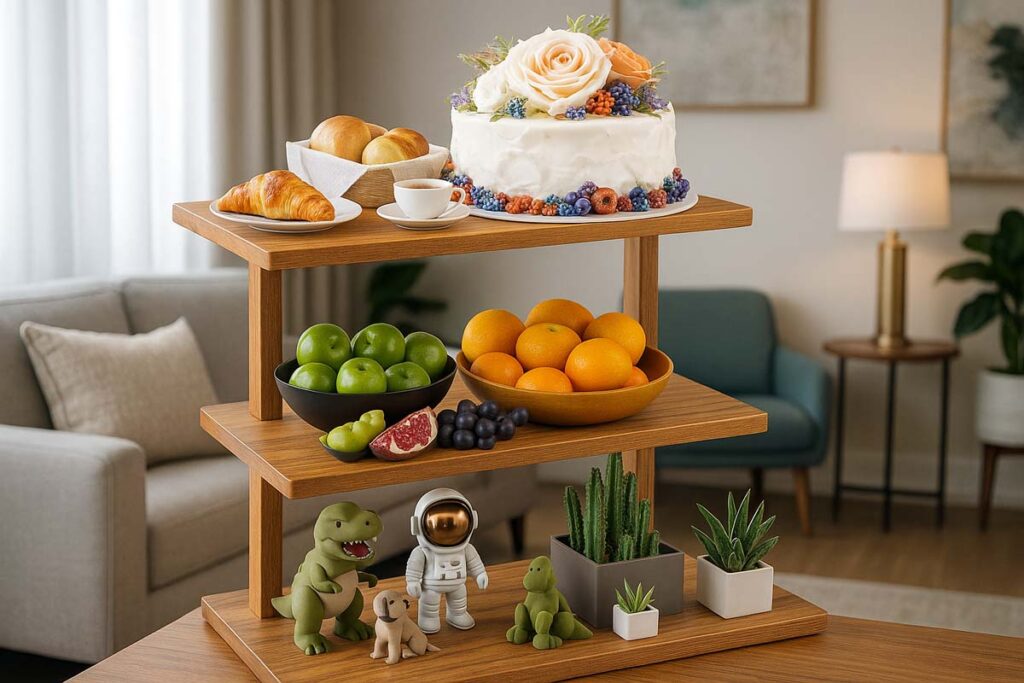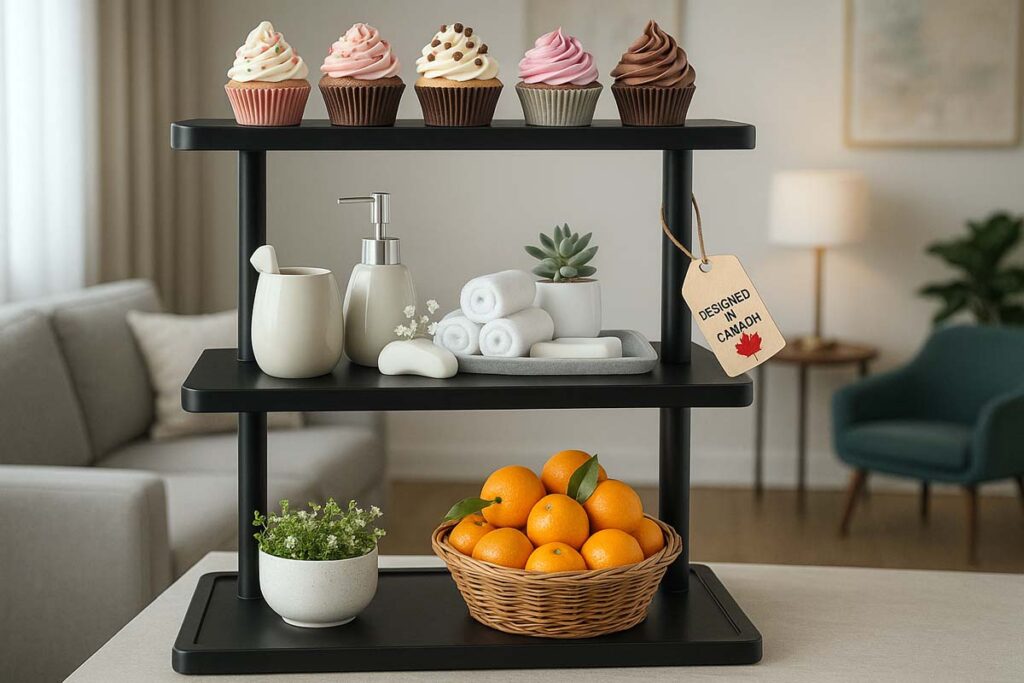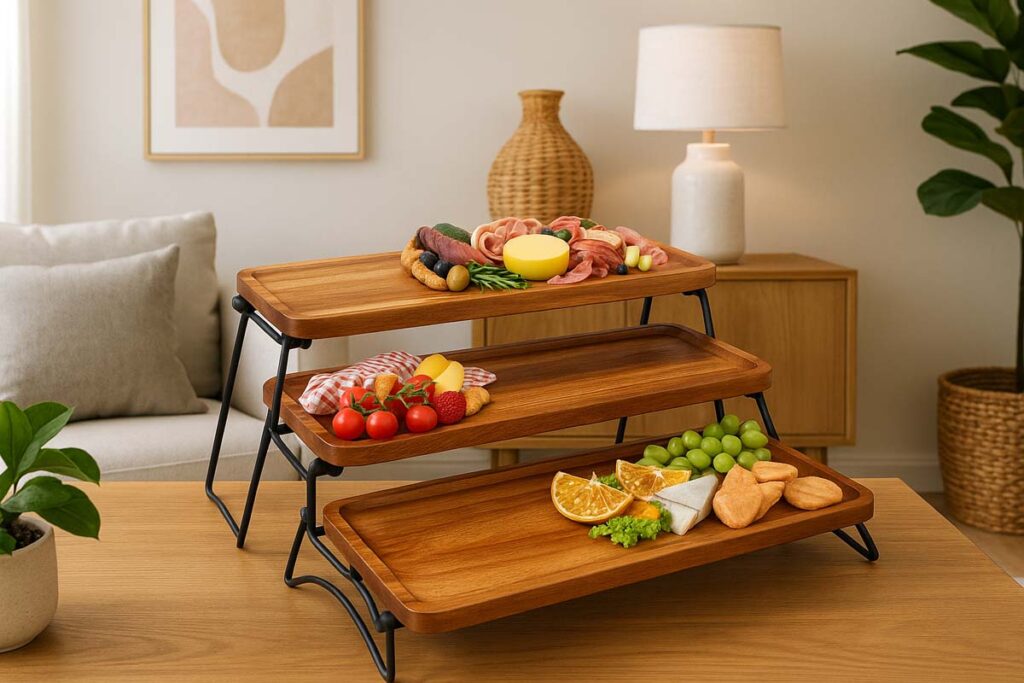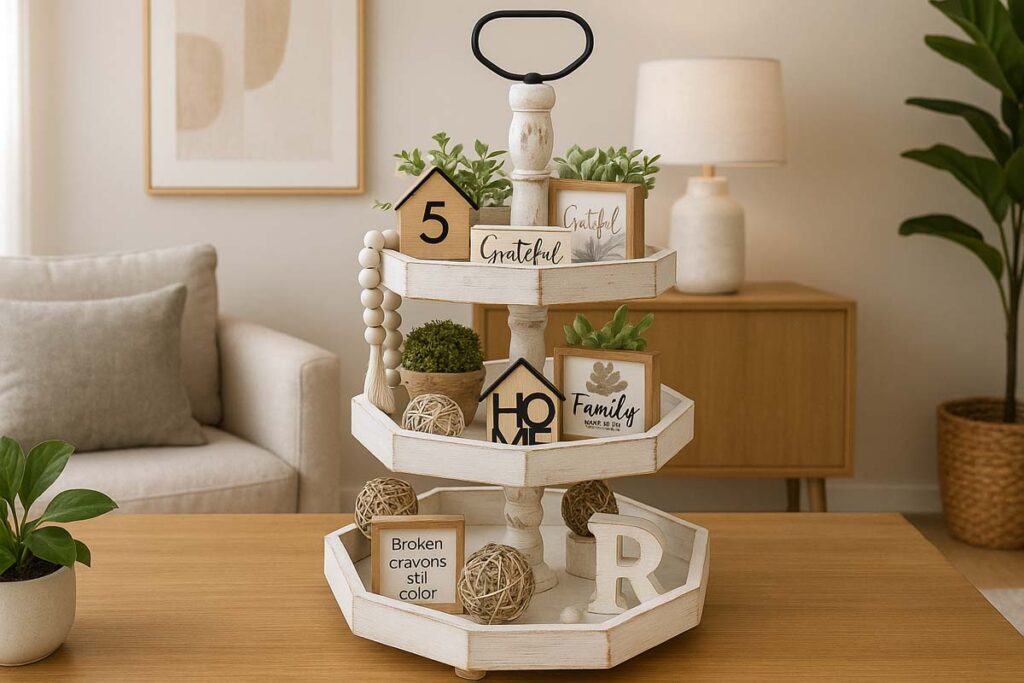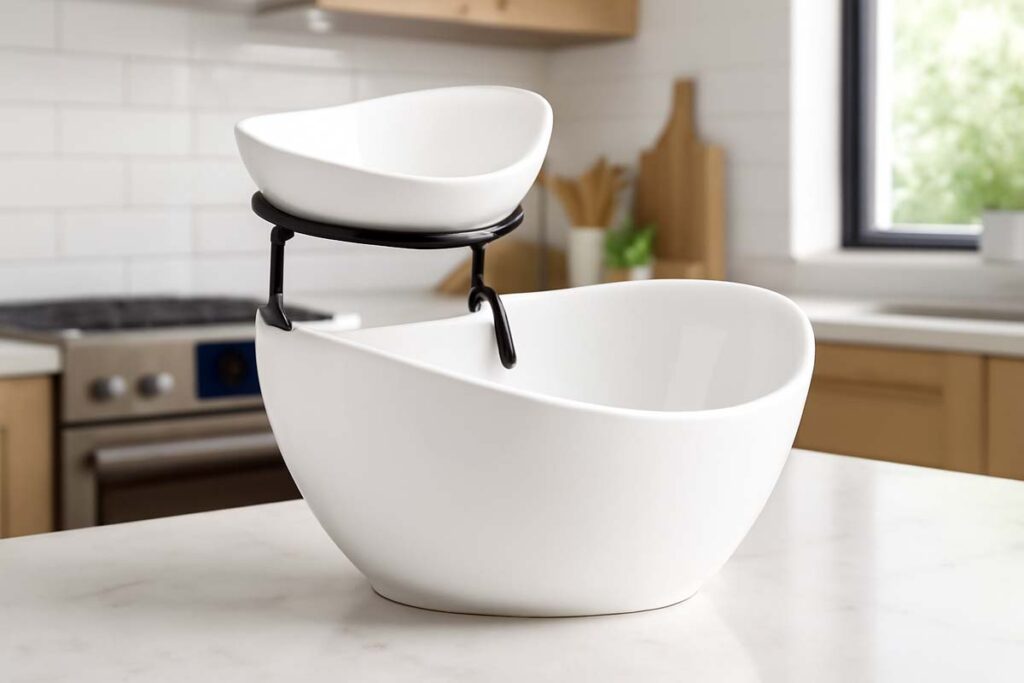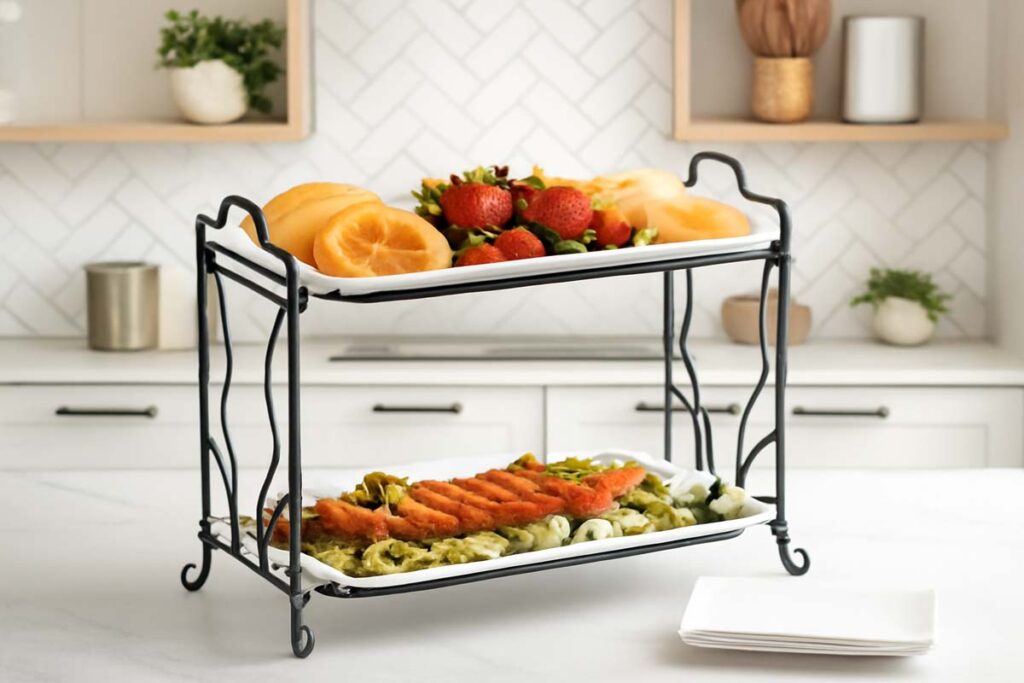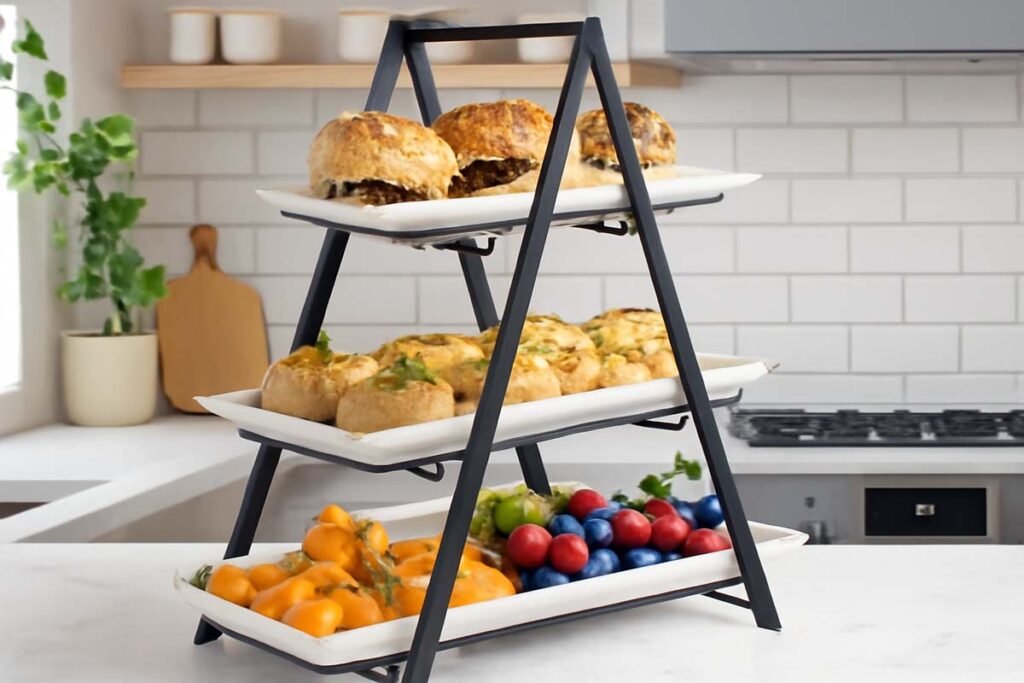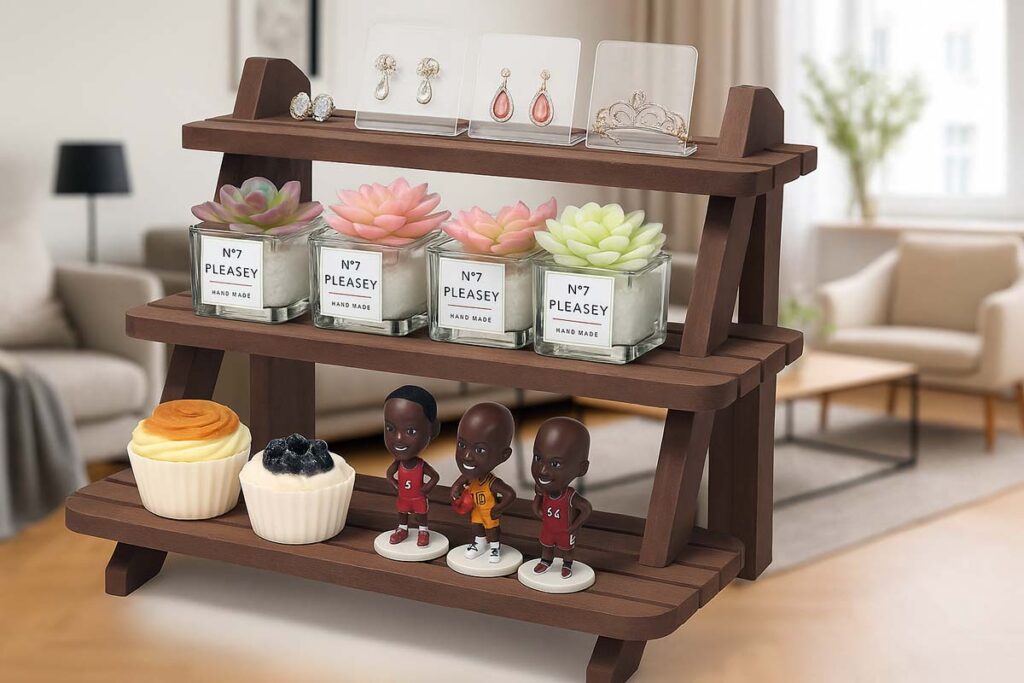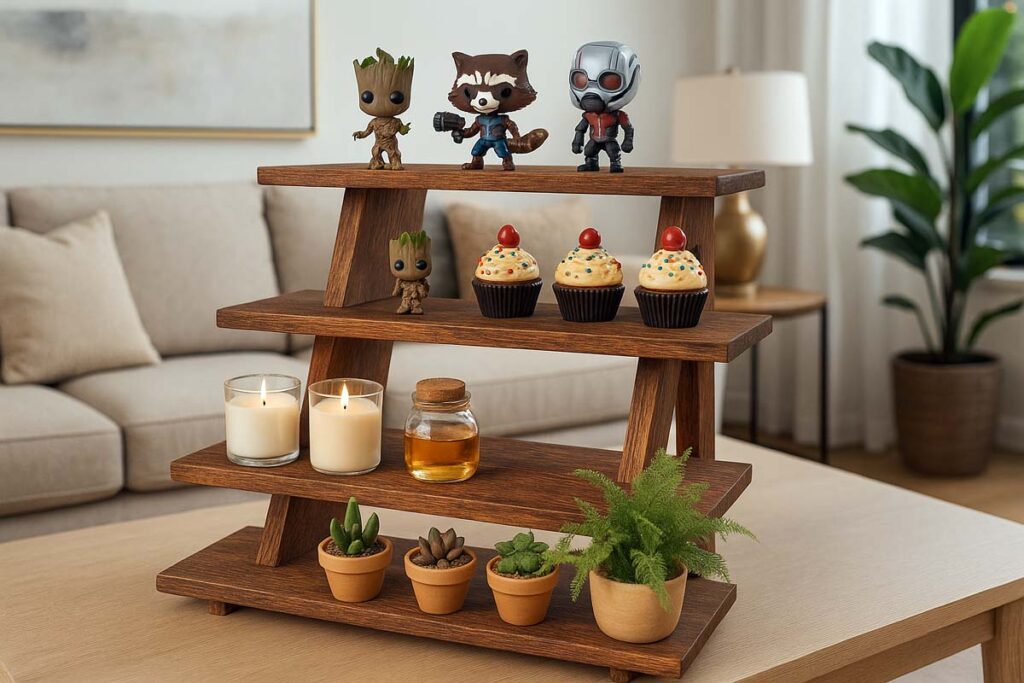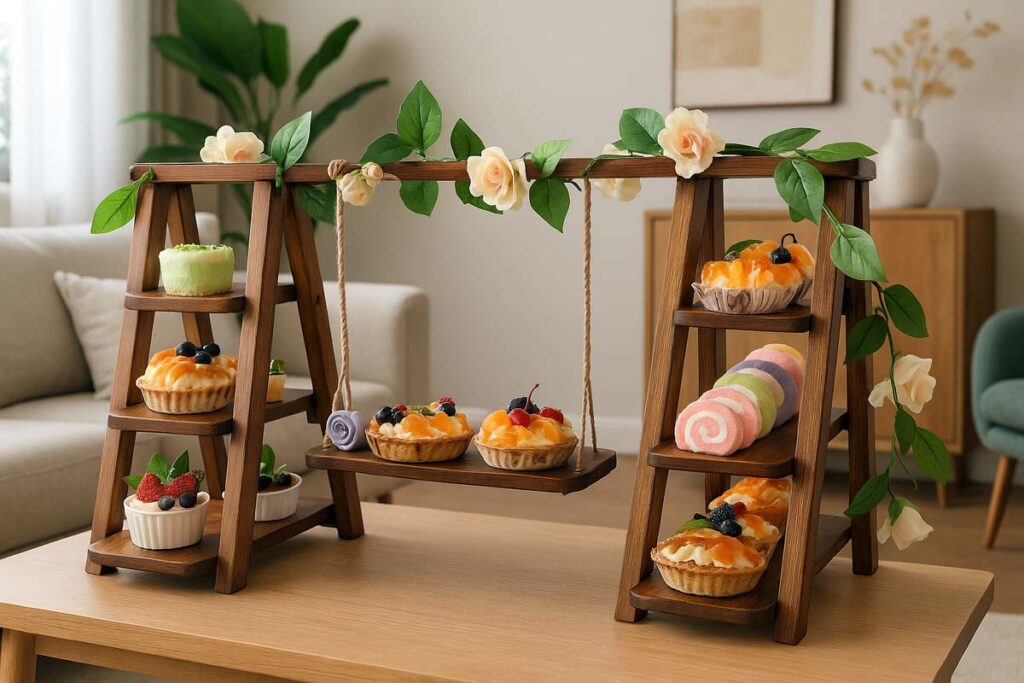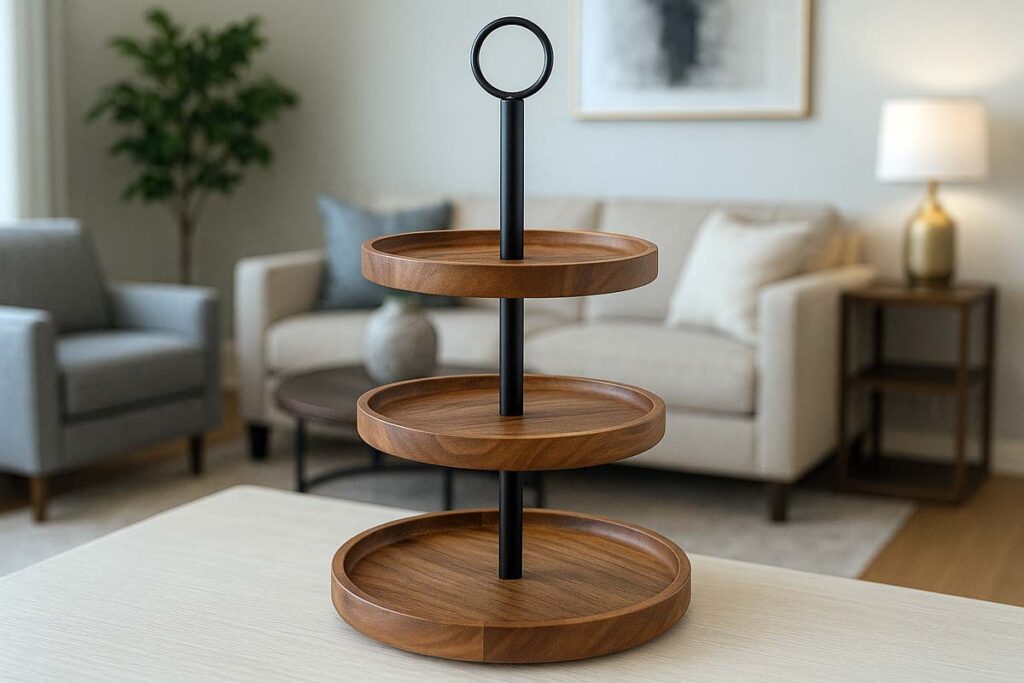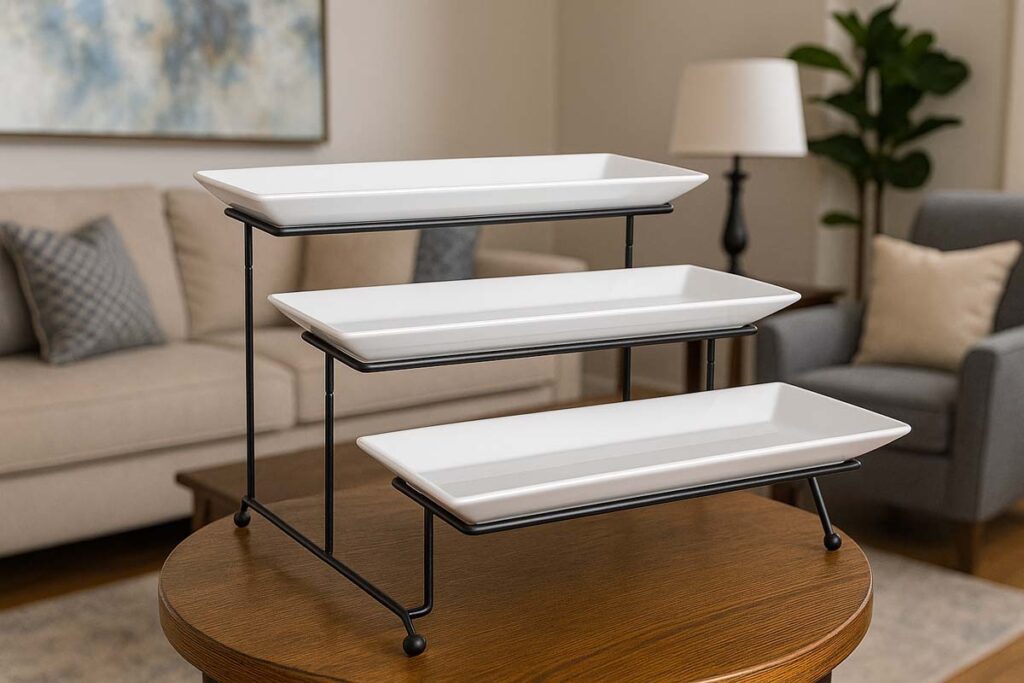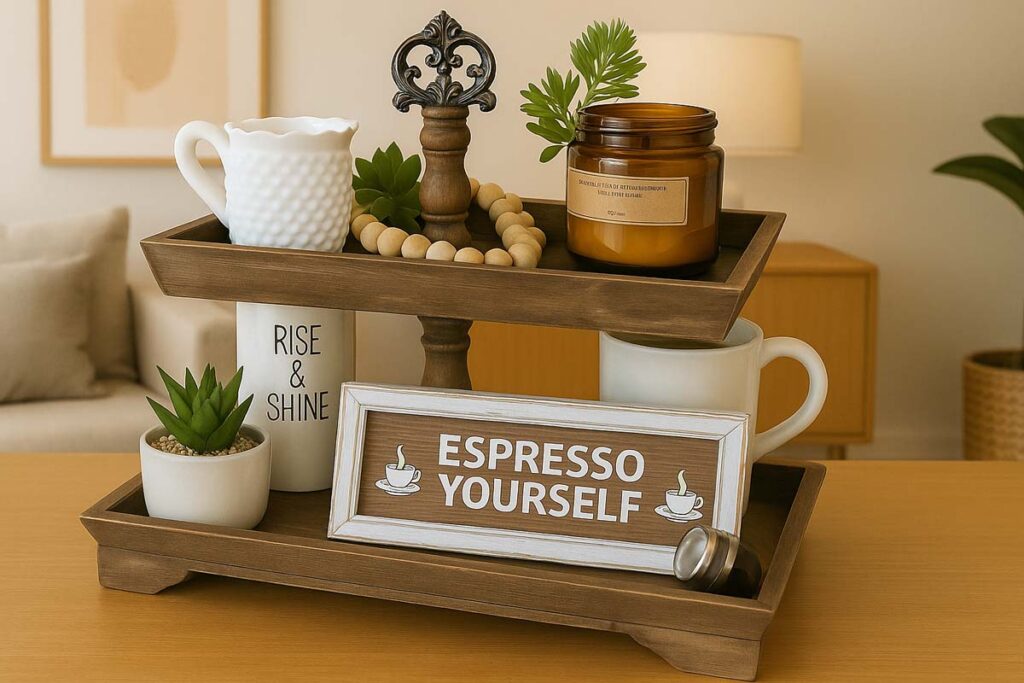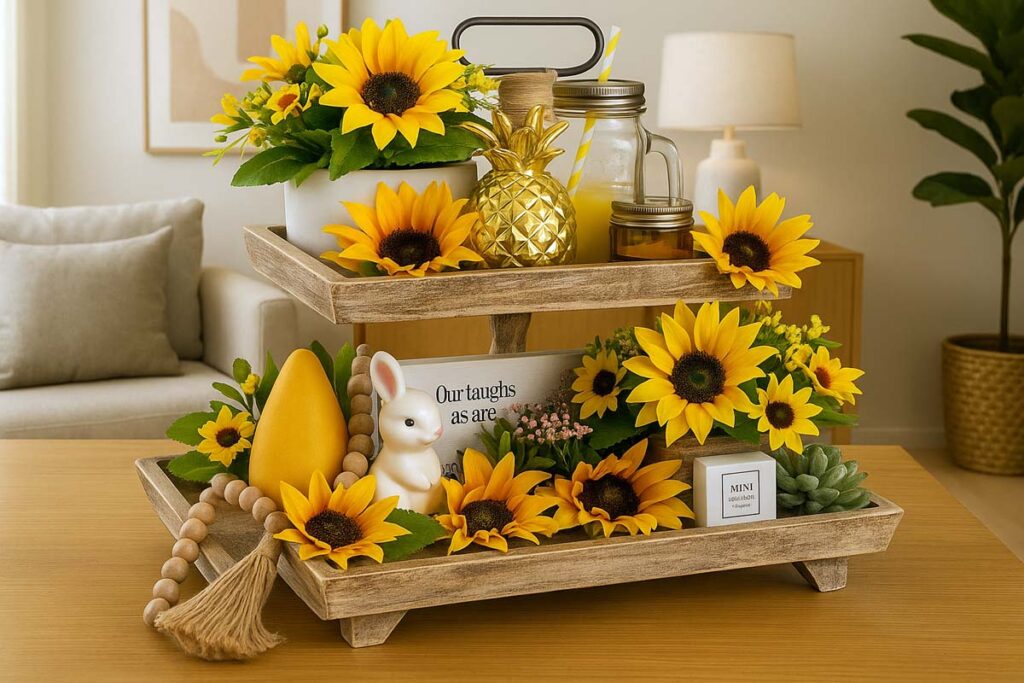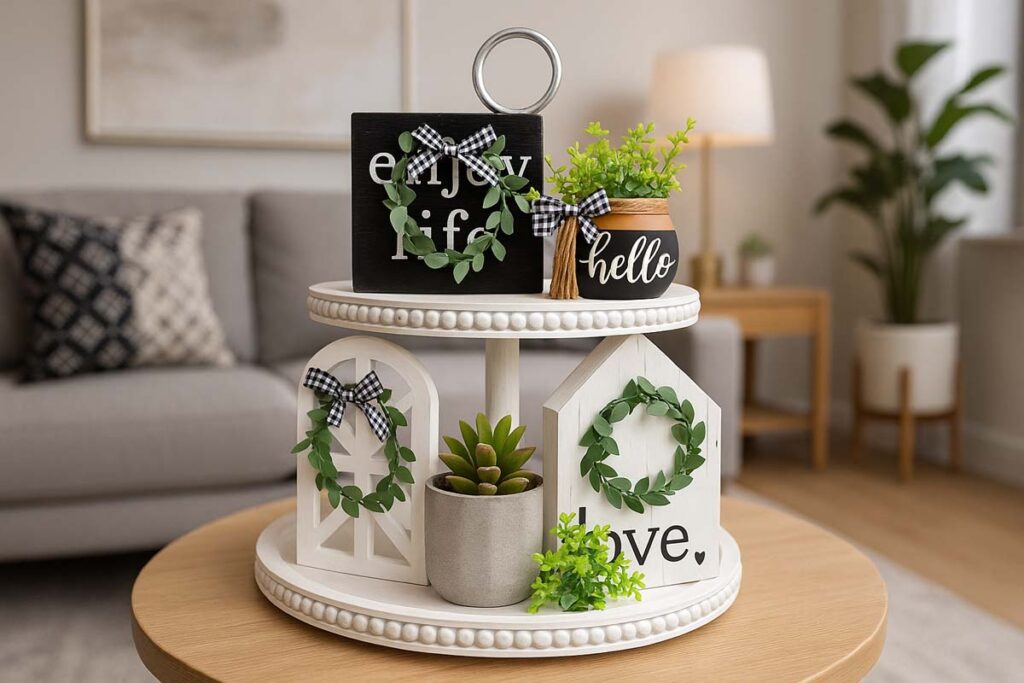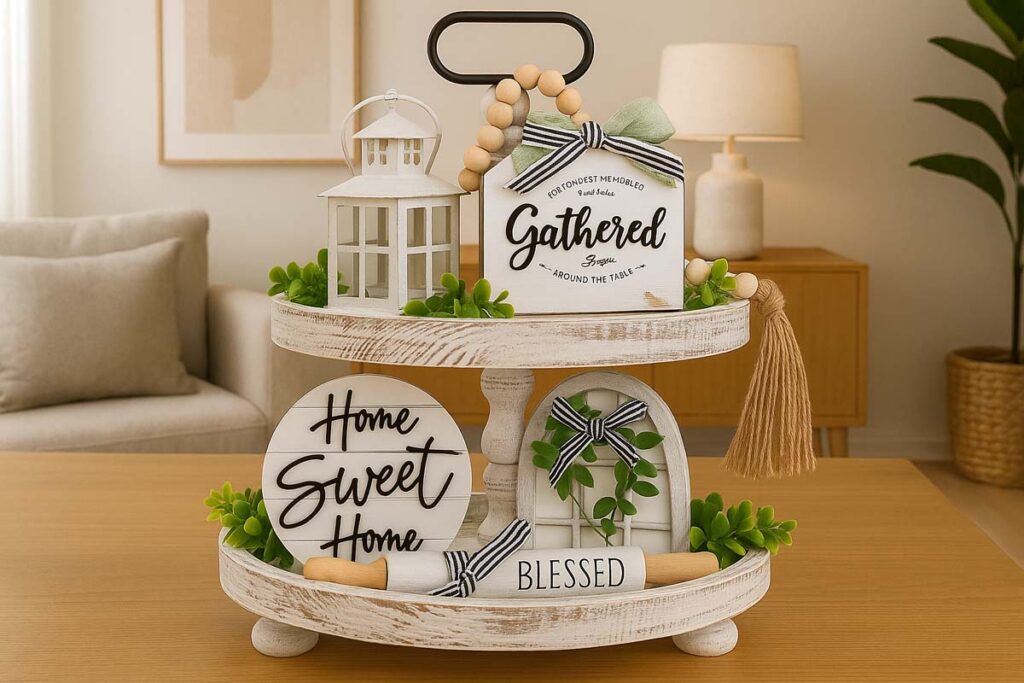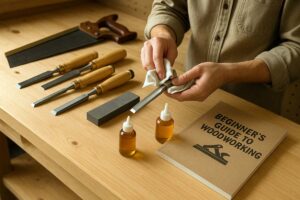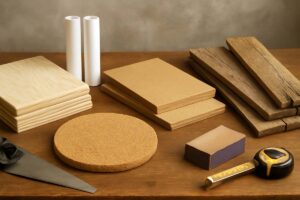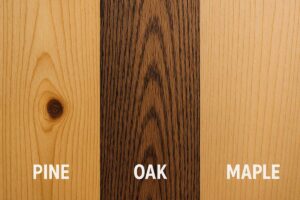Tiered Tray Stand: Design Inspiration, Styling & Care by TrayEdit
I’ve always valued simple touches that bring warmth and order to my home. A wooden tiered tray stand is one of those versatile pieces I reach for again and again. A tiered tray stand is a multi-level display piece with stacked trays or plates held by risers, perfect for organizing small items, serving treats, and adding decorative flair to any tabletop. It’s no wonder this home decor accessory has soared in popularity. Plus, it doubles as a seasonal display for every holiday.
I explain when to pick a 2-tier or 3-tier tray stand, how to size one for a coffee bar, which materials last longest, and how to keep it stable. I also link to hands-on reviews and step-by-step plans for building wooden stands and tiered serving trays.
Build Stronger Tiered Trays → Start Today
I’ll send concise plans, cut lists, joinery choices, and finish tips every week. Subscribe now to avoid guesswork, prevent wobbles, and style each tier confidently before your next project starts.
What Is a Tiered Tray Stand?
A tiered tray stand stacks two or three trays on a center post over a stable base. The vertical design saves space while adding height and structure for display or serving. Use it for coffee supplies, seasonal décor, desserts, or entryway essentials. I use mine for a coffee bar, seasonal décor, and party snacks. The goal is simple: more display in the same footprint.
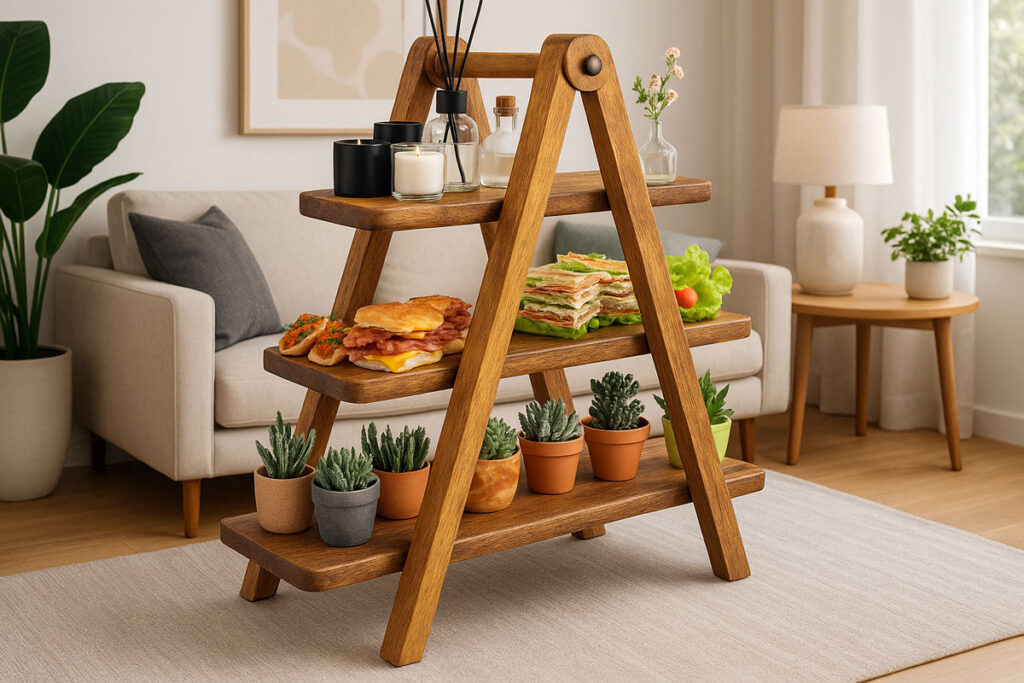
Take a look at the 44 wooden tiered tray stands I personally designed and handmade, featuring both 2-tier and 3-tier styles. If you’re wondering how to style them, don’t miss my step-by-step guide on how to decorate a tiered tray stand with creative and seasonal ideas.
How I Choose the Right Size
I start with the space. For everyday counters, a 2-tier stand is easy to live with. It clears most cabinets and still holds mugs and jars. A 3-tier stand carries more, but it needs more height and a wider base. I measure clearance first, then pick tray diameters that won’t crowd the area.
Benefits of Using a Tiered Tray Stand
A decorative tiered tray brings both style and function. The benefits are:
- Space saving: vertical storage with the same footprint.
- Better visibility: tiers separate categories—mugs on one, jars on another.
- Easy to move: one handled piece instead of many small items.
- Year-round use: swap props by season; no new furniture needed.
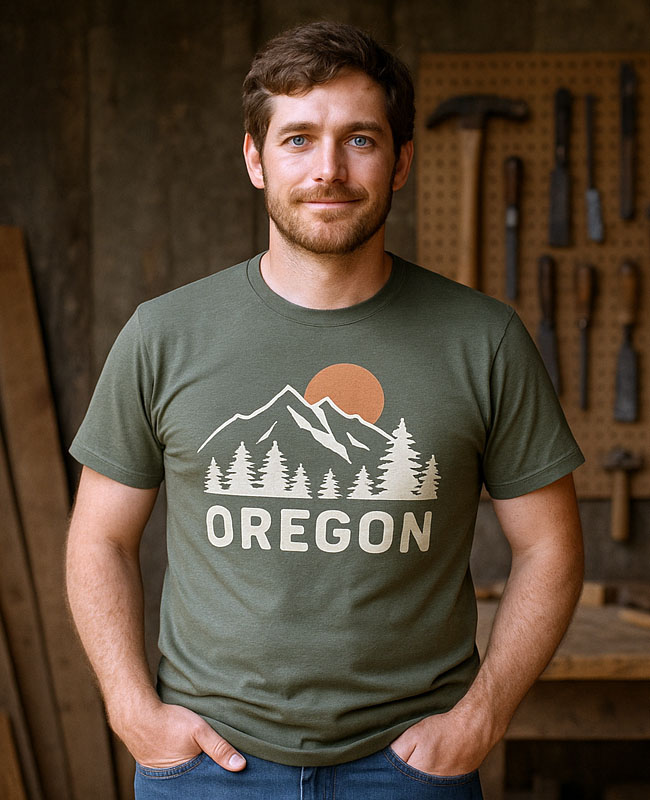
About Wayne Kocher
I’m Wayne Kocher, a 35-year-old woodcraft enthusiast from Eugene, Oregon, and the creator of TrayEdit.com. My passion for handcrafted wooden decor runs deep—especially when it comes to tiered tray stands. Over the years, I’ve poured my heart into learning everything I can about woodworking, design, and functional aesthetics.
Through my blog, I share practical tips, design inspiration, and honest insights from my hands-on experience. If you’re into unique, well-crafted home decor that blends style and function, you’re in the right place.
The 18 Best Tiered Tray Stands, According to Me
TrayEdit Categories
If you’re curious about woodworking, you’ll find the info you’re looking for in one of the four categories below. Each article includes images and insights based on my personal experience. If you spot any mistakes, feel free to drop a comment on the article and let me know!
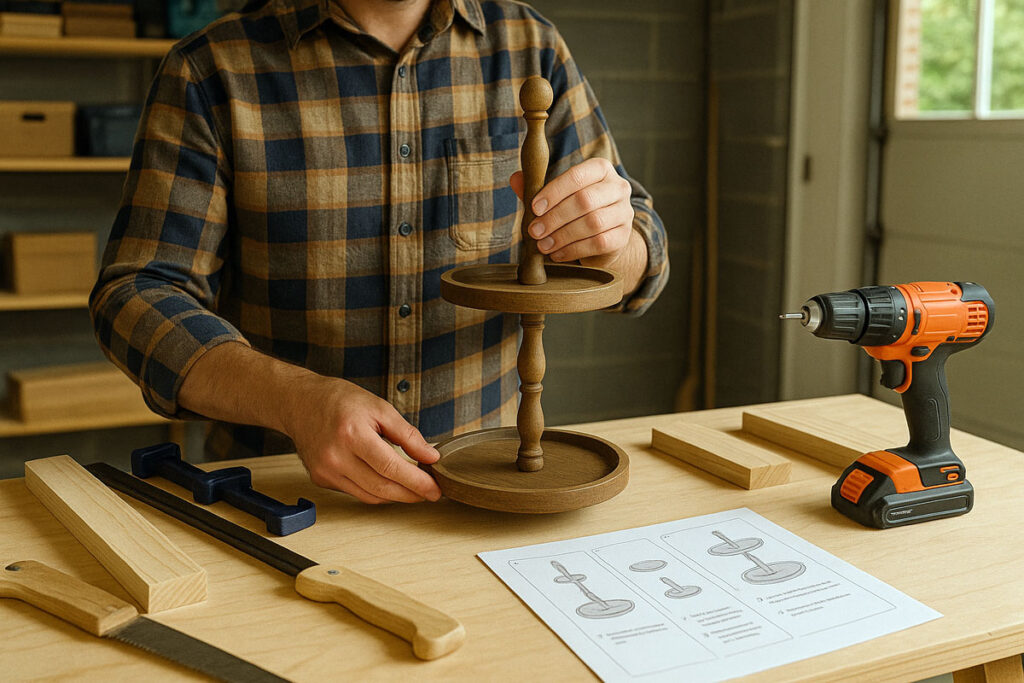
Guides
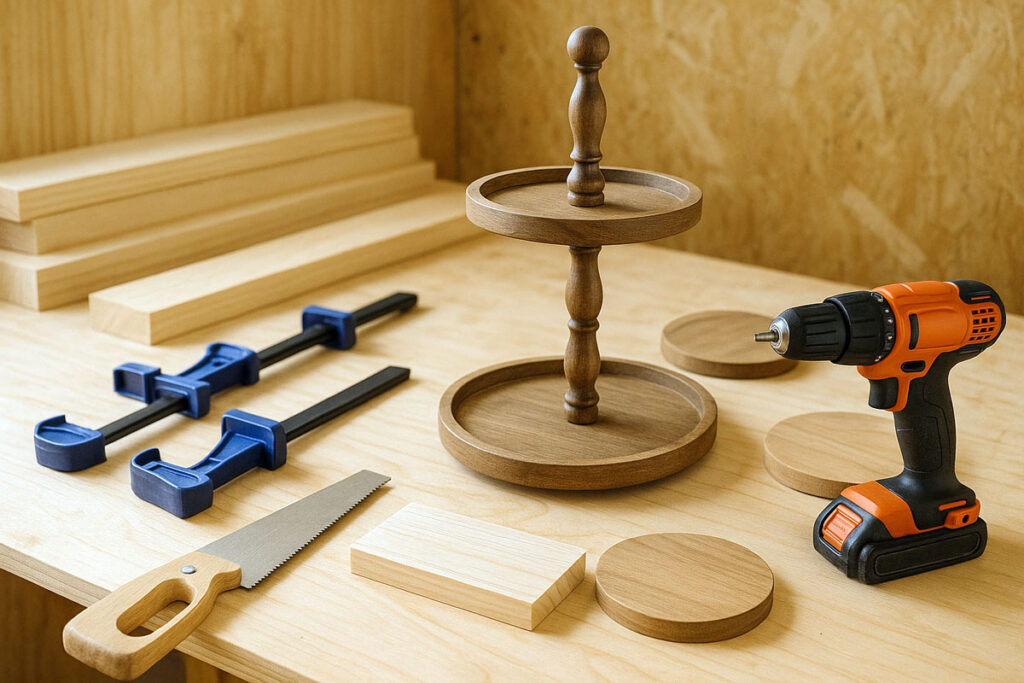
Materials
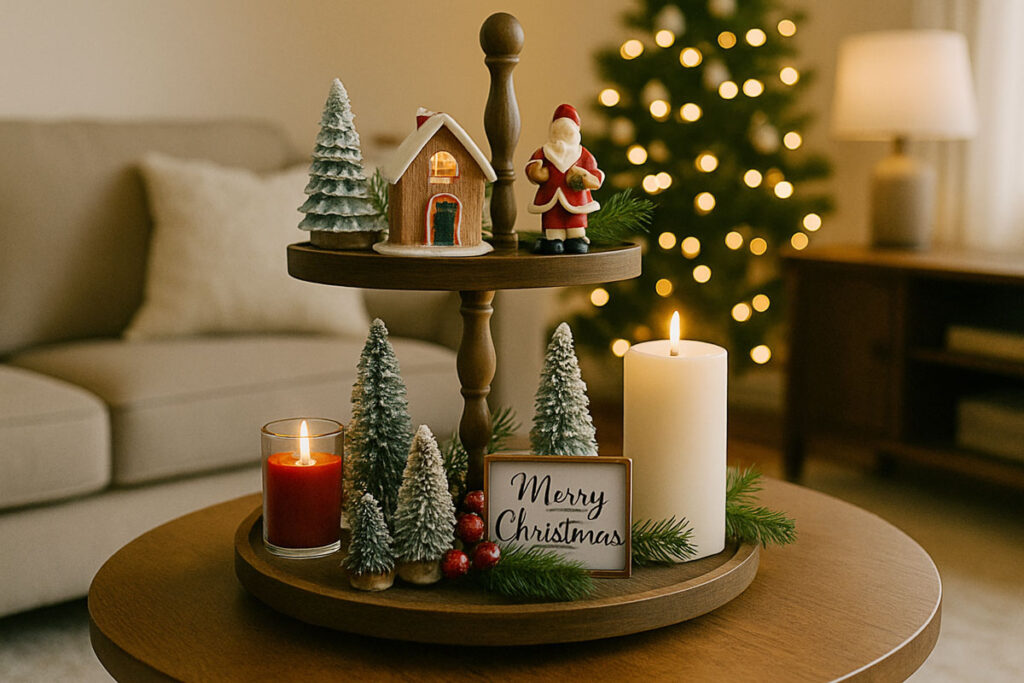
Styling
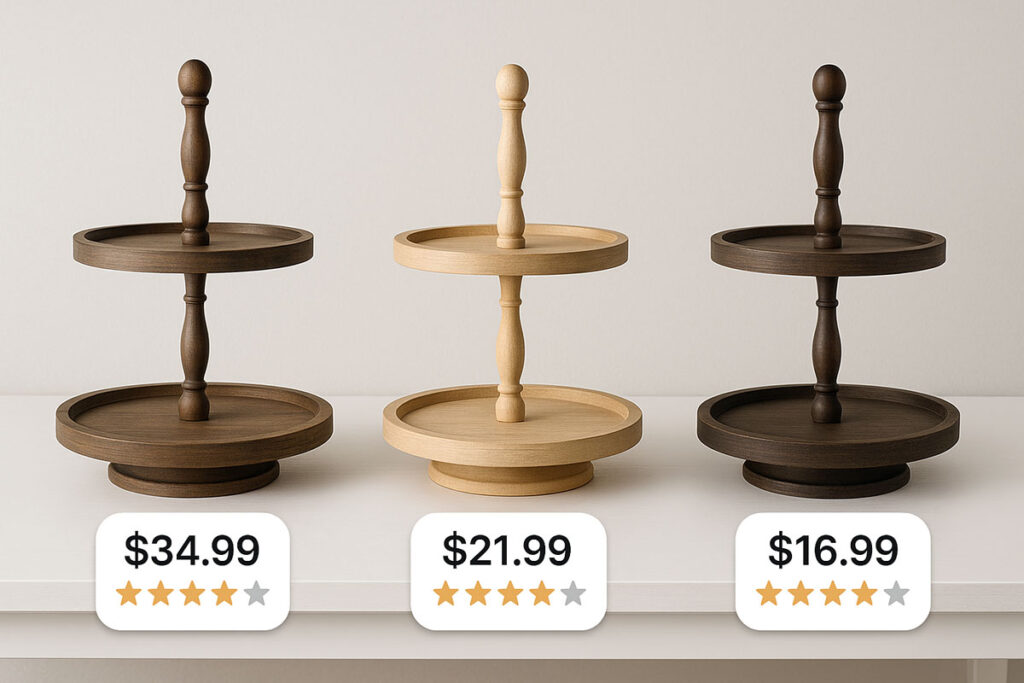
Reviews
How to Choose the Best Tiered Tray Stand
Choosing the best tiered tray stand hinges on size and tiers, material and durability, and style or theme. Match these criteria to your space and needs. That way, you’ll enjoy your stand for years.
Size & Number of Tiers
Measure your tabletop first. A 2 tier tray stand suits compact spaces like a breakfast nook. However, a 3 tier tray stand looks grand on an island or console. For tight areas, pick a 10-12-inch base. For roomy tables, go 14-16 inches. Also consider height considerations: two levels offer a cozy feel; three levels draw the eye upward. Finally, think of what you’ll display: cookies need less height than mini pumpkins.
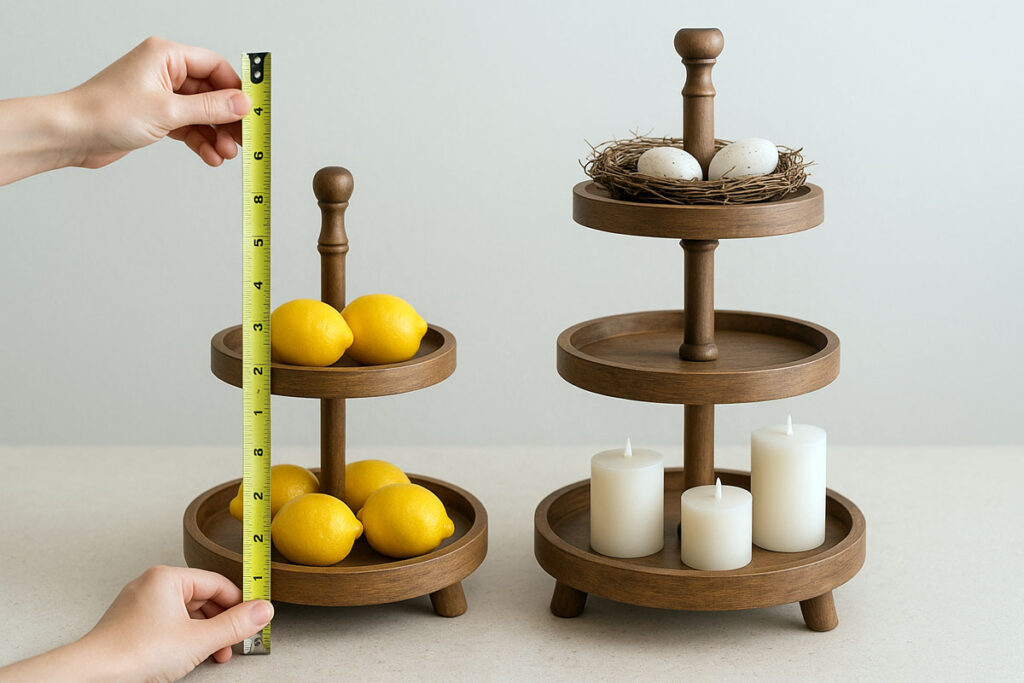
Choose Materials & Durability
I build with maple, white oak, or walnut when I want strength and clean edges. Pine is fine for décor but dents faster. Wood brings farmhouse warmth but can warp if damp. Metal stands are tough and wipe clean quickly. Ceramic tiered trays look great for serving. I match the material to the job, then choose a finish that fits how it’ll be used.
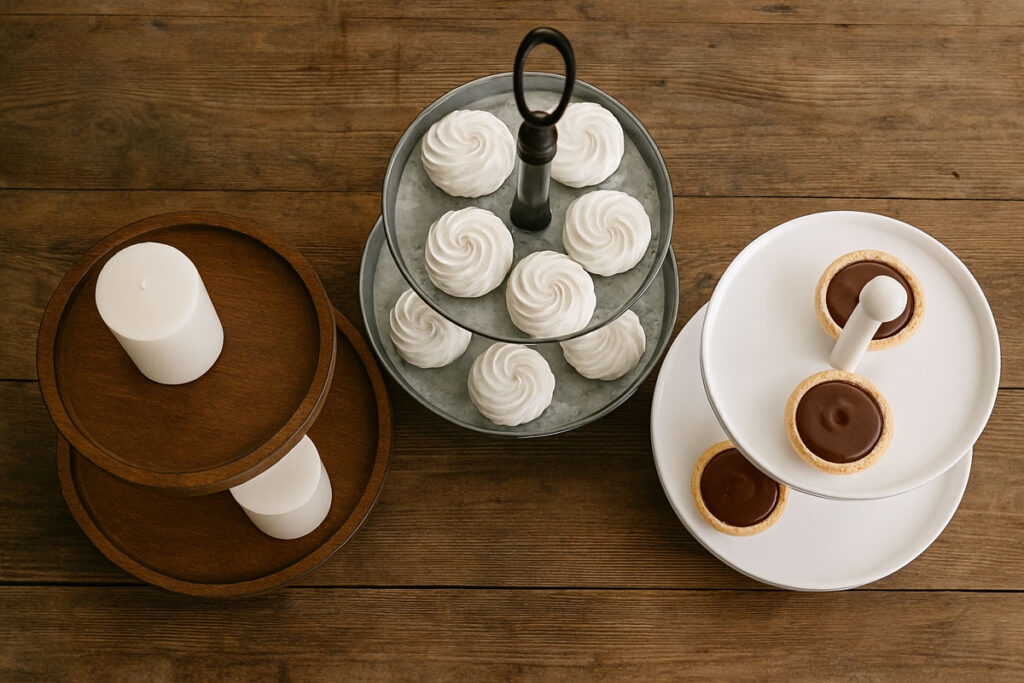
Material Matrix (What You Should Do)
| Material | Best For | Pros | Cons / Watch-outs | Care |
|---|---|---|---|---|
| Hardwood (maple, oak, walnut) | Everyday décor, coffee bars, light serving | Warm look, repairable, strong edges | Don’t soak; soft species dent | Damp wipe; dry; refresh oil/wax as needed |
| Softwood (pine) | Budget décor | Lightweight, inexpensive | Dents/scratches easier | Damp wipe; consider tray liners |
| Metal (steel, powder-coated) | High-traffic areas, outdoor dining | Very durable, easy to clean | Can slide without rubber feet | Mild soap; dry to prevent spots |
| Galvanized metal | Farmhouse look, patios | Rust-resistant coating | Coating can wear outdoors | Hand wash; paste wax for added protection |
| Ceramic/stoneware | Dessert displays, formal settings | Elegant, non-porous surface | Chips if dropped; heavy | Hand wash; pad the base |
| Engineered wood (MDF/veneer) | Budget décor | Uniform look, stable indoors | Hates water; edge swelling if damaged | Dry cloth; avoid soaking |
Read more: Compare species, weights, and finishes in my 6 best wood types for sturdy tiered tray stands guide.
Hardware, Base & Feet (Stability First)
- Through-rod vs short bolts: A continuous rod from base to finial stays tight longer. Short bolts are fine if each tray has a metal sleeve/insert.
- Base width: For 2-tier, base ≥ 0.35 × overall height. For 3-tier, base ≥ 0.45 × overall height.
- Feet: Use rubber for grip on slick counters. Use felt if you want easy sliding on wood tables.
Finish & Food Use (Quick Overview)
If food will touch the trays, prefer surfaces that are food-contact safe once fully cured (details below). For messy or oily foods, use liners regardless of finish.
Style & Theme
Farmhouse, modern, or rustic all work. I keep the lines simple and let props carry the style—mugs, jars, greenery, and a small sign. Less clutter looks better and makes cleaning faster.
Pick a style that fits your space. Rustic farmhouse decor uses distressed wood and iron. Modern minimalist designs lean on sleek metal and neutral tones. Vintage chic stands boast ornate details and pastel finishes. For extra flair, swap out handles or add seasonal styling kits. You might paint risers to match wall art or mix-and-match parts.
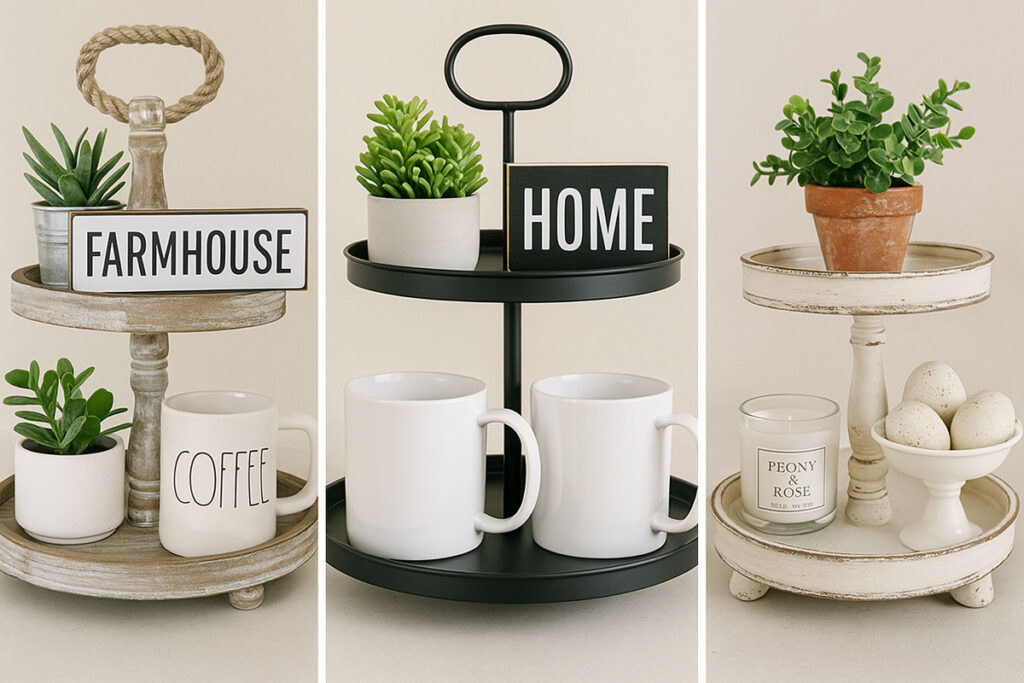
Quick Sizing Cheat-Sheet
Use this table to pick sizes that fit most homes. Measure your space first.
| Stand Type | Tray Diameters | Height Between Tiers | Overall Height | Where It Fits Best |
|---|---|---|---|---|
| 2-tier | Top 10–12 in (254–305 mm), Bottom 14–16 in (356–406 mm) | 8–10 in (203–254 mm) | 14–18 in (356–457 mm) | Under standard wall cabinets; small counters |
| 3-tier | Top 8–10 in (203–254 mm), Middle 10–12 in (254–305 mm), Bottom 14–16 in (356–406 mm) | 7–9 in (178–229 mm) each | 20–24 in (508–610 mm) | Islands, buffets, consoles |
Stability & Load Capacity
- Plan the load: For most quality stands with a through-rod or stout post, plan for 10–15 lb (4.5–6.8 kg) total. Need more? Choose a wider base and thicker post.
- Feet first: Add rubber feet for grip on stone/laminate; felt for wood tables if you want slide.
- Tighten correctly: Snug the center rod while keeping trays level. A small drop of medium-strength thread-locker on metal threads helps long-term stability.
- Level the base: Test on a flat surface. If it rocks, shim one foot or install adjustable feet.
- Safety check: Load heavy items on the bottom tier. Leave the top tier for light décor.
Food-Safe vs Decorative Finishes
Food-Contact Options (use when trays may touch food)
Mineral oil / oil-wax blends:
- How: Wipe on; wait 10 minutes; wipe off. Repeat until the surface stops absorbing.
- When to reuse: Re-oil when dry or dull.
Shellac:
- How: Brush or pad thin coats.
- Timing: Dries fast; give it overnight before light use. Avoid standing water.
Pure tung oil:
- How: Apply thin coats, 24 hours apart.
- Cure: Allow 7–30 days to cure (fewer days for thin coats, longer in cool/humid rooms) before food contact.
Decor-Only Options (use liners if food touches)
Polyurethane / varnish / paint: Durable film for décor. Treat as food-safe only after full manufacturer cure. Still use parchment or small plates for greasy foods.
Cleaning Do’s & Don’ts by Material
- Wood: Damp wipe → dry immediately. No soaking or dishwasher. Refresh oil/wax when it looks dry.
- Metal: Mild soap, soft cloth. Dry to prevent spots. Wax galvanized pieces used outdoors.
- Ceramic: Hand wash. Avoid thermal shock; pad the base to protect counters.
Troubleshooting (Fast Fixes)
- Tray leans → Loosen, clear debris, re-seat, tighten while pressing trays level. If the base isn’t flat, shim a foot.
- Tiers rub → Add a thin washer/spacer on the post or increase spacing. Check that trays are right-side up.
- Finish looks cloudy → Let it dry fully. On wood, buff a thin coat of oil/wax to refresh.
- Post keeps loosening → Use medium thread-locker on the threads or replace worn insert nuts.
- Slides on counter → Replace felt with rubber feet; clean counter residue.
Styling Ideas for Your Tiered Tray Stand
- Spring Florals: Layer faux blooms, moss, and pastel ceramic pots. Vary heights for depth.
- Summer Fruit: Pile lemons, limes, and berries on each tier. Add a woven coaster beneath.
- Fall Pumpkins: Mix mini gourds, leaves, and candles. Use shades of orange, white, and green.
- Holiday Ornaments: Fill tiers with baubles, pinecones, and tiny lights. Tie a ribbon around the handle.
- Everyday Kitchen Display: Arrange oils, spices, and small potted herbs. Use clear jars for uniform look.
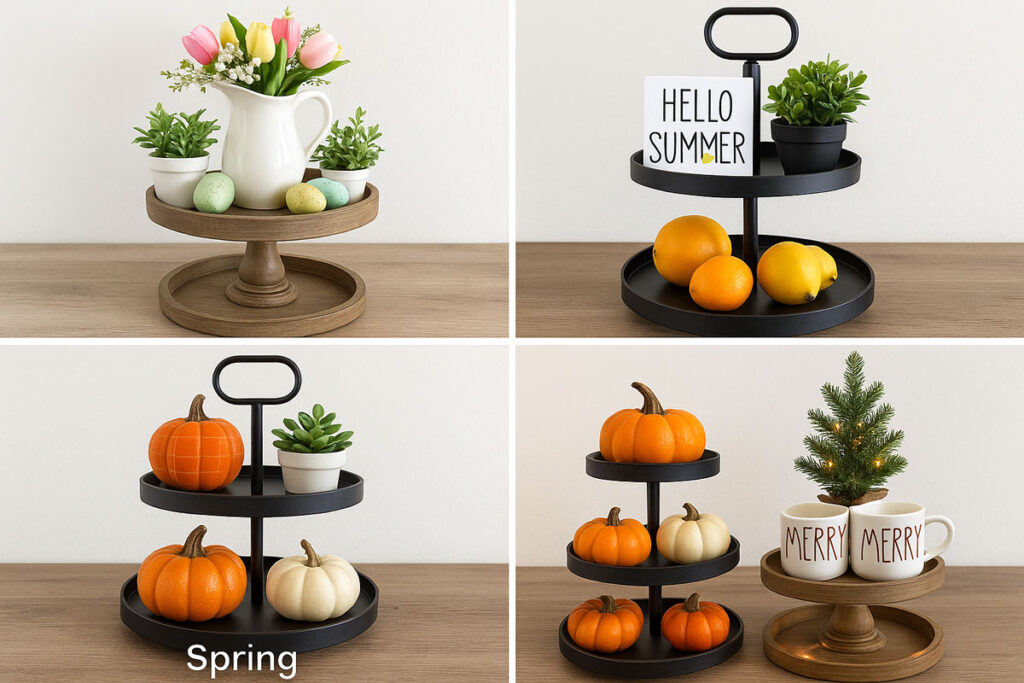
With seasonal tiered tray styling, use a mix of textures, heights, and small objects to create balance. Holiday tiered trays look best when they combine themed items with everyday neutrals. Don’t forget DIY tray fillers for a custom touch.
Where to Buy Tiered Tray Stands Online
If I’m not building, I buy from big retailers with stable inventory. I compare sizes, base width, hardware type, and finish. I also check return windows in case the stand wobbles out of the box.
- Amazon: Wide range, fast shipping, prices from budget to premium.
- Etsy: Handmade wooden stands and custom designs for unique finds.
- Wayfair: Trend-driven pieces, frequent sales, free shipping on many orders.
- Walmart: Affordable picks, easy returns, in-store pickup available.
Read more: See our complete where to buy tiered tray stands guide for trusted stores, price ranges, and checks before you order.
Buying Guide Checklist
- Size & tiers: Fits the spot? 2-tier for tight spaces; 3-tier for capacity.
- Tray diameters: Top 10–12 in; Bottom 14–16 in (flexible everyday setup).
- Base & post: Wide base; rigid post; through-rod preferred.
- Material: Wood for warmth; metal for easy cleaning; ceramic for serving.
- Finish & food use: Food-contact finish if trays touch food; liners for messy items.
- Feet: Rubber for grip; felt for sliding.
- Assembly: Clear instructions; locking hardware.
- Care: Wipe-clean surfaces; replaceable feet.
- Warranty/returns: Confirm window in case of wobble or damage.
Care and Maintenance Tips for Tiered Tray Stands
- Wipe wood tiers gently with a soft, damp cloth. Never soak them—excess moisture can warp or crack natural wood over time.
- Use mild soap and water for metal or ceramic levels. Avoid abrasive sponges; instead, opt for microfiber cloths to prevent scratches.
- Disassemble risers and trays regularly for a thorough cleaning, especially after food use. Always let each part air-dry completely before reassembling to prevent trapped moisture.
- Apply a food-safe sealant or wax to galvanized metal stands used outdoors to prevent rust.
- For seasonal storage, take the stand apart and wrap fragile parts (like ceramic trays or painted handles) in fabric or bubble wrap. Store everything in a dry, temperature-controlled space.
Read more: Follow the full care & cleaning for tiered tray stands checklist with products, intervals, and fixes for wobble.
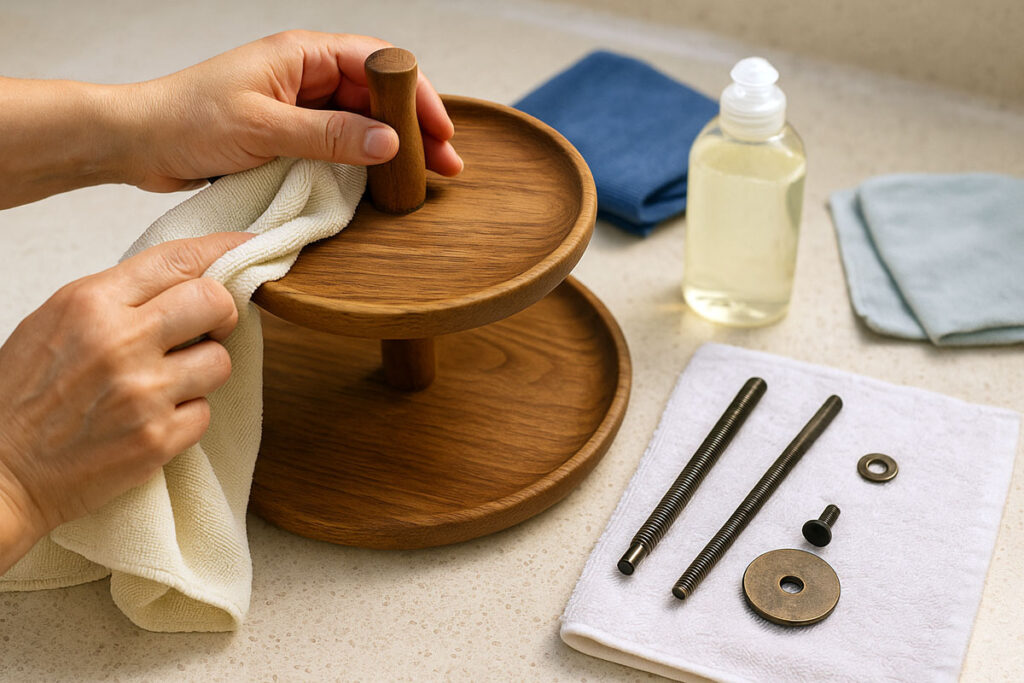
These tray care and cleaning tips will keep your stand looking sharp and functioning well, helping you maintain long-lasting décor throughout the year.
Final Words
A tiered tray stand adds style, function, and order to any room. Whether you’re displaying treats, organizing coffee-bar supplies, or decorating for the holidays, it works year-round. Choose the right size and number of tiers to fit your space. Pick materials like wood for warmth or metal for a modern look. Match the style to your décor—farmhouse, vintage, or minimalist—and personalize it with everyday or seasonal items.

